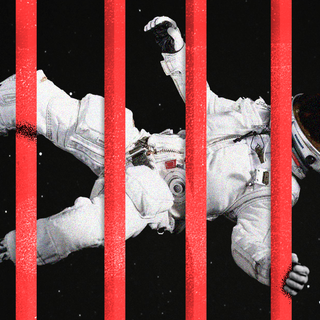When scientists analyzed soil samples brought back from the moon, they found something unexpected: compounds in the soil that were rich in iron and titanium could, under sunlight and carbon dioxide, produce oxygen.
The findings, published in the journal Joule, will help us find more cost and resource-efficient ways to power space flights in the future. “Just like the ‘Age of Sail’ in the 1600s when hundreds of ships head to the sea, we will enter an ‘Age of Space.’ But if we want to carry out large-scale exploration of the extraterrestrial world, we will need to think of ways to reduce payload, meaning relying on as little supplies from Earth as possible and using extraterrestrial resources instead,” said co-authors Yingfang Yao and Zhigang Zou, from Nanjing University.
The sample in question was brought back by Chang’e 5, a spacecraft from China’s fifth lunar mission. In 2020, the craft returned the youngest-ever Moon samples to Earth — the soil is about 1.2 billion years old, compared with the 3.1 and 4.4 billion-year-old samples returned by the Apollo missions. It could tell us a lot about the Moon’s history and in turn, the Earth’s too.
Related on The Swaddle:
The Moon Has Water, Says NASA
Scientists have now proposed an “extraterrestrial photosynthesis” strategy that could help put these observations to use. The proposed method works like this: water extracted from lunar soil can be electrolyzed using sunlight, and converted into oxygen and hydrogen for cosmonauts’ breathing suits. The carbon dioxide they exhale can, in turn, can be combined with the hydrogen from the first step in the process and, with the help of catalysts in lunar soil, be used to produce methane to be used as fuel.
The result is such that just by using sunlight as an energy source, lunar soil can support life as well as the tech needed for sustaining moon bases. “We use in-situ environmental resources to minimize rocket payload, and our strategy provides a scenario for a sustainable and affordable extraterrestrial living environment,” Yao said.
The strategy vastly reduces the need for energy sources to be carried from Earth, and thus improves upon existing ways of supporting human beings venturing out into the far reaches of space. “…we propose a potentially available extraterrestrial photosynthesis pathway on the moon, which will help us to achieve a “zero-energy consumption” extraterrestrial life support system,” the paper states.




